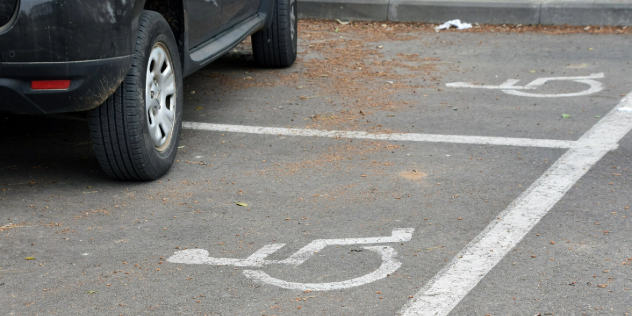The NSW Mobility Parking Scheme (MPS) scheme originated nearly 50 years ago to give people with disabilities improved access to high population areas such as the Sydney CBD.
Since then, the introduction and implementation of the National Disability Insurance Scheme (NDIS) in 2013 gave people with disabilities the opportunity to drive independently with the right supports and vehicle modifications.
The MPS permit allows people with disabilities (both drivers and passengers) and older Australians to park in a reasonably safe place with adequate room to consider their mobility aids, such as a manual wheelchair or a car hoist. Without an MPS permit, people with disabilities and older Australians would face significant barriers accessing their community, employment and even their homes.
How to ensure people with disabilities find safe parking
It goes without saying, but motorists without MPS permits should not park in disability parking spaces. Taking or interfering with a spot, even for a short amount of time, has real world consequences for those who really need them.
Disabled spaces are generally longer than regular spaces to allow for loading and unloading of passengers with automated wheelchair lifts, so be mindful not to leave any portion of the nose or tail end of your car overhanging into a disabled space.

Be mindful not to leave any portion of the nose or tail end of your car overhanging into a disabled space. Image credit: Getty
Catching disability parking cheats - enforcement and fines
Enforcement of accessible parking is conducted by NSW Police and authorised council parking officers for both on-street and council-operated car parks. The scheme is not generally enforced in private car parks.
The on-the-spot fine is $581, but courts may impose fines of up to $2,200. From 1 December 2014, anyone caught parking in a disabled spot without the proper permit loses one demerit point, following a successful advocacy campaign by the NRMA based on Member feedback.
During the 2021 financial year, there were 12,992 fines issued to drivers for this offence. This figure shows that many people are still not getting the message.
How to report misuse of disability parking spaces
In 2007, the 1300 884 899 Mobility Parking Scheme Hotline was launched to report suspected misuse of disability parking permits, report medical practitioners suspected of incorrectly issuing permits, and report persons suspected of not being mobility impaired.
Apps such as Snap Send Solve are also being used to report illegal disabled parking to the appropriate authorities.
When a MPS permit is not displayed or misuse is obvious:
- Report it directly to the relevant enforcement officers such as local councils.
- For privately operated car parks or shopping centres, report the issue to centre management.
However, determining if someone is fraudulently misusing a disabled parking permit is not easy and should not be assumed. Someone’s disability may not be visible, so always give the benefit of the doubt.





